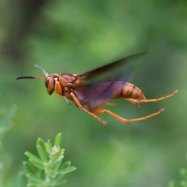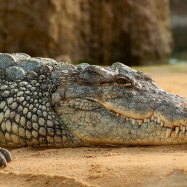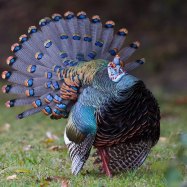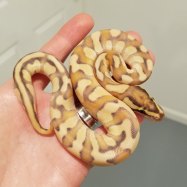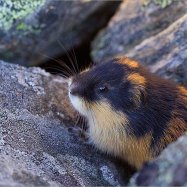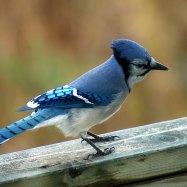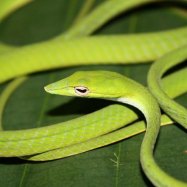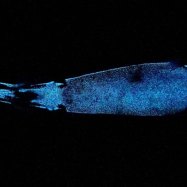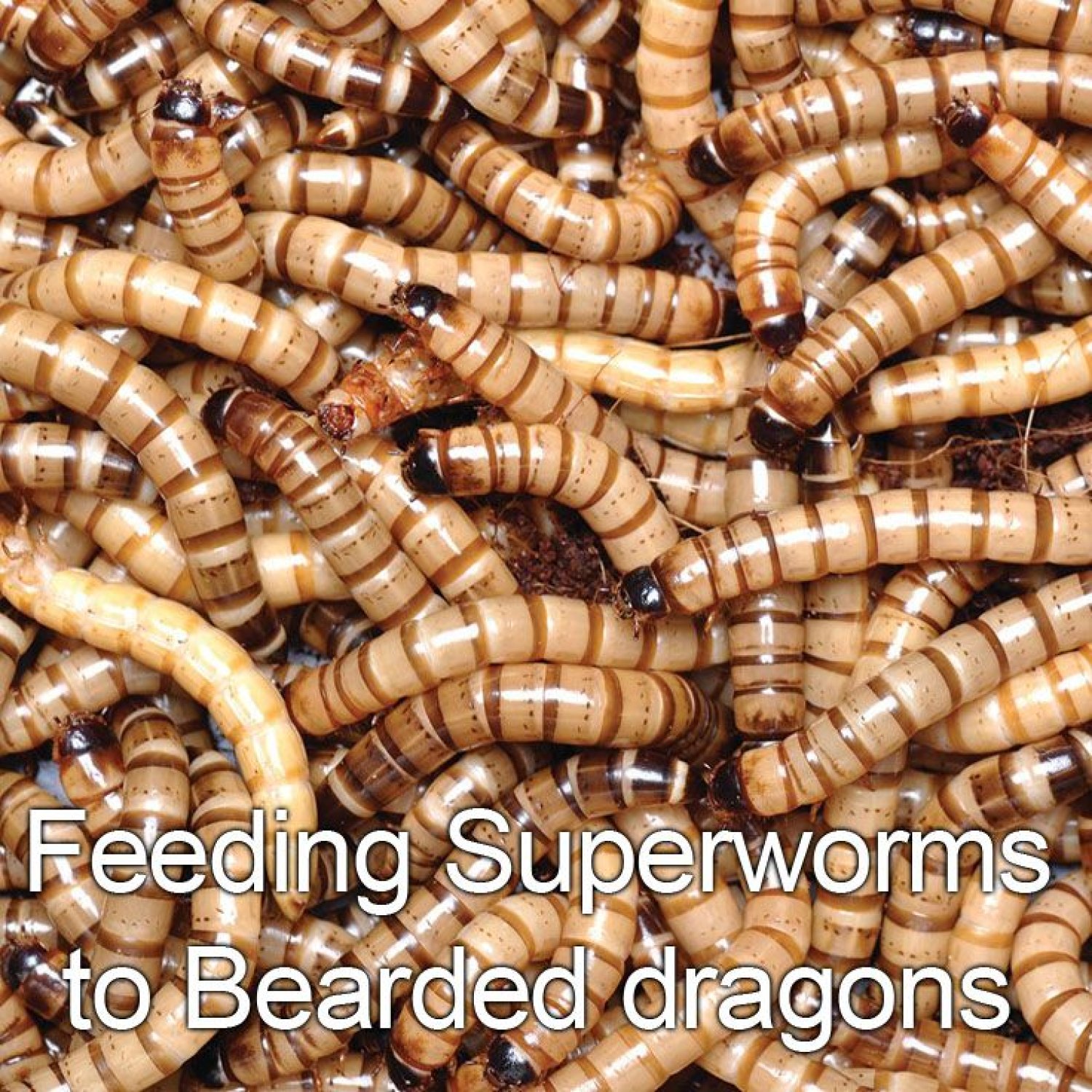
Superworm
2.5-5 cm
Superworms, also known as Zophobas morio, are small cylindrical animals that can grow up to 5cm in length. Found worldwide, these creatures belong to the Tenebrionidae family. These worms are commonly used as feed for reptiles and birds due to their nutritional value. They also play a vital role in soil health, making them an important part of the ecosystem. So, next time you come across a superworm, remember how important they are in maintaining balance in nature.
Animal Details Summary:
Common Name: Superworm
Kingdom: Animalia
Habitat: Underground burrows and rotting logs
Meet the Mighty Superworm: Nature's Detritivore
In the world of insects, there are some that draw our attention with their vibrant colors or intricate body designs. Then, there are others that may not seem as flashy but play crucial roles in their environment. The superworm, also known as Zophobas morio, may not be the most visually striking insect, but it serves as a vital part of ecosystems in tropical regions worldwide.From Brazil to the World: Superworm's Origins and Distribution
The superworm is a species of dark brown insect that belongs to the Animalia kingdom, Arthropoda phylum, and Insecta class Superworm. It is a member of the Coleoptera order, which includes beetles, and the Tenebrionidae family, which consists of darkling beetles. This creature measures between 2.5 to 5 centimeters in length and has a cylindrical body shape.This creature got its common name, superworm, due to its impressive ability to survive and thrive in various environments. Its original home is in the tropical regions of Brazil, where it can be found in abundance. However, due to its adaptability, it has spread to other parts of the world, including Africa, Asia, and North America.
Underground Dwellers: Superworm's Habitat and Feeding Method
The superworm is a burrowing insect that prefers to live in underground burrows and rotting logs. These locations provide the perfect environment for them to thrive, offering moisture, protection, and a food source. As detritivores, superworms play a crucial role in the decomposition process Sauropoda. They break down organic matter, such as rotting logs and dead plants, and return nutrients to the soil.Their diet consists of decaying plant material, fungi, and microorganisms. They have powerful jaws that allow them to chew through tough material, making them efficient at breaking down organic matter. This feeding method also helps to maintain the balance of nutrients in the soil, which is essential for the health of plants and other organisms in the ecosystem.
The Unsung Heroes: Superworm's Impact on the Environment
While superworms may not receive the same level of attention as other insects, they play a vital role in maintaining the delicate balance of ecosystems. These underground dwellers help to recycle nutrients and fertilize soil, improving the overall health of the environment. Without superworms, organic matter would pile up, leading to more frequent and intense wildfires and disrupting the natural cycle of life.Superworms are also a valuable source of food for other animals, including birds, reptiles, and rodents. As they break down organic matter, they release nutrients and microorganisms that serve as food for these creatures. In turn, their predators help control the population of superworms, ensuring their numbers do not get out of control.
A Versatile Superworm: Adapting to the Changing World
One of the most impressive features of the superworm is its ability to adapt to changing environments. They are hardy creatures that can survive in a wide range of temperatures and humidity levels. This adaptability has allowed them to spread worldwide, making them one of the most widespread and successful insect species.Superworms have also been used in various industries, including science and agriculture. They are often used as models for studies on nervous system development, metabolism, and aging. In agriculture, superworms are used as a food source for livestock and as a natural method of composting. Due to their high protein content, they are also a popular choice for reptile and bird owners looking to feed their pets a nutritious and natural diet.
The Dark Horse of the Insect World: Appreciating Superworms
Despite their incredible adaptability, vital role in ecosystems, and usefulness in industries, superworms are still not widely recognized and appreciated. They are often overlooked in favor of more visually striking and popular insects. However, with the current climate crisis and the increasing need for sustainable solutions, it is essential that we recognize and appreciate the humble superworm.Furthermore, superworms also serve as a reminder of the intricate and interconnected web of life on our planet. Every creature, no matter how small or seemingly insignificant, plays a crucial role in maintaining the balance of our planet. By neglecting or underestimating the importance of certain species, we risk disrupting this delicate balance and causing irreparable damage to our environment.
Final Thoughts: The Mighty Superworm
In conclusion, the superworm, or Zophobas morio, may not have the same level of recognition as other insects, but it is an essential part of our world. From their adaptability to their vital role in ecosystems, and their usefulness in various industries, superworms have proven their worth time and time again. As we continue to navigate the challenges of a changing world, it is crucial that we appreciate and protect these unsung heroes of the insect world.

Superworm
Animal Details Superworm - Scientific Name: Zophobas morio
- Category: Animals S
- Scientific Name: Zophobas morio
- Common Name: Superworm
- Kingdom: Animalia
- Phylum: Arthropoda
- Class: Insecta
- Order: Coleoptera
- Family: Tenebrionidae
- Habitat: Underground burrows and rotting logs
- Feeding Method: Detritivore
- Geographical Distribution: Tropical regions
- Country of Origin: Brazil
- Location: Worldwide
- Animal Coloration: Dark brown
- Body Shape: Cylindrical
- Length: 2.5-5 cm
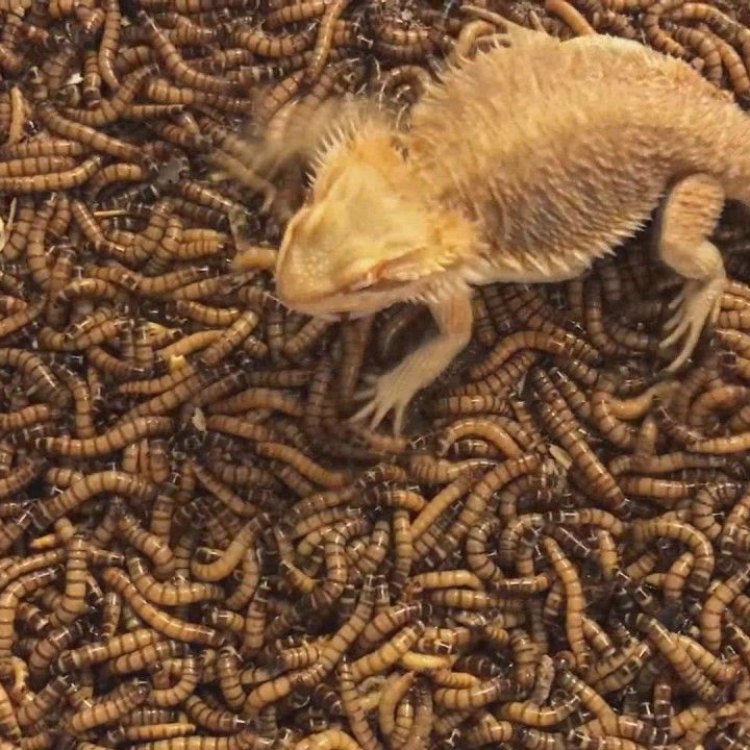
Superworm
- Adult Size: 5-8 cm
- Average Lifespan: 10-20 weeks
- Reproduction: Sexual
- Reproductive Behavior: Mating occurs during the dark hours of the day
- Sound or Call: No
- Migration Pattern: Non-migratory
- Social Groups: Solitary
- Behavior: Nocturnal
- Threats: Predation
- Conservation Status: Not evaluated
- Impact on Ecosystem: Act as decomposers
- Human Use: Used as animal feed and fishing bait
- Distinctive Features: 6 legs, segmented body, hard exoskeleton
- Interesting Facts: Superworms are not actually worms, but the larval stage of a darkling beetle
- Predator: Birds, reptiles, amphibians, and small mammals
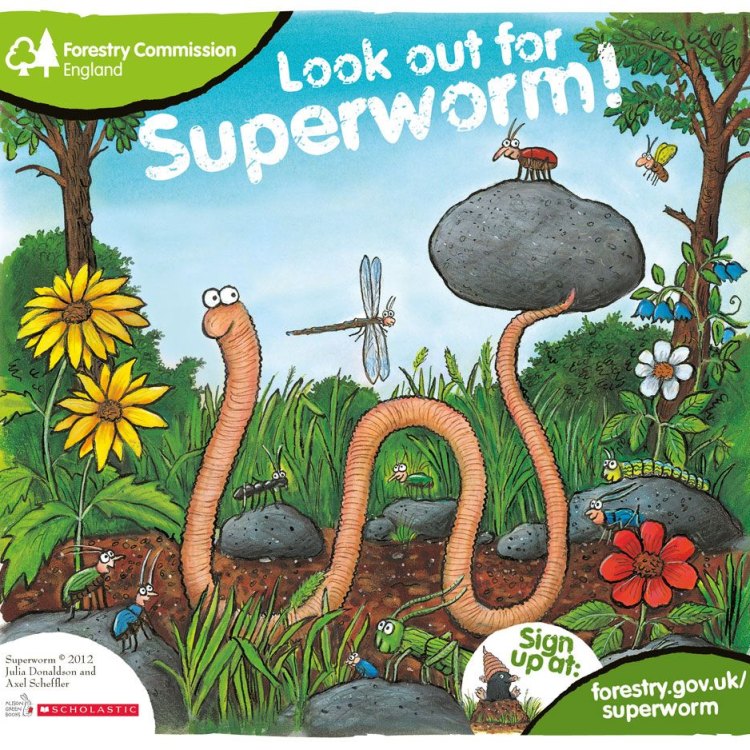
Zophobas morio
The Fascinating World of Superworms: Nature's Mini Decomposers
From their six legs, segmented bodies, to their hard exoskeleton, superworms may look like ordinary worms at first glance. However, upon closer inspection, these fascinating creatures are actually the larval stage of darkling beetles. Often sold as pet food or fishing bait, superworms may not seem like the most exciting or intriguing species, but they are truly unique and play a significant role in our ecosystem.Let's take a deep dive into the world of superworms and discover their interesting features, behaviors, and impact on the environment PeaceOfAnimals.Com.
Meet the Superworm
Superworms, also known as Zophobas morio, are native to Central and South America. They are often found living in rotting logs or leaf litter, making them excellent decomposers in the wild. These creatures are not worms at all, but the larval form of a darkling beetle. Their name comes from their super-sized appearance compared to regular worms, with an average length of 5-8 cm and a thickness of a pencil.While they may seem small compared to other insects, superworms have a relatively long lifespan for their size, with an average lifespan of 10-20 weeks in captivity. In the wild, their lifespan is even shorter due to various environmental factors.
The Mating Behavior of Superworms
Superworms reproduce sexually, with males and females needing to mate in order to produce offspring. Mating usually occurs during the dark hours of the day, as these creatures are nocturnal. During this time, female superworms release pheromones to attract males, signaling their readiness to mate Skink Lizard.Once the male and female have mated, the female will lay eggs within a few days, with each egg containing a single superworm larva. The larvae hatch after 3-4 days and look like miniature versions of their parents. They will continue to grow and molt several times before reaching their pupal stage, where they undergo metamorphosis and become darkling beetles.
A Unique Nocturnal Behavior
Superworms are primarily nocturnal creatures, meaning they are most active at night. This behavior serves as protection from potential predators, as most of their natural predators, such as birds, reptiles, amphibians, and small mammals, are more active during the day.The darkling beetles, which superworms eventually become, are also active at night. This makes them perfect foragers, as they can avoid competition with other daytime insects and predators.
Not a Chatty Species
While some insect species are known for their unique calls or songs, superworms are not one of them. These creatures do not make any sound or call. They communicate primarily through chemical scents, such as the pheromones released by females during mating.A Non-Migratory Species
Unlike some insects that travel long distances during migration, superworms are non-migratory. They prefer to stay in one place, making their homes in rotting logs or leaf litter, where they have easy access to food and shelter. However, in captivity, superworms may crawl out of their bedding material and attempt to escape, leading some individuals to believe they are migratory. Still, this is simply a result of them seeking out a more suitable environment.A Solitary Life
Superworms are solitary creatures, meaning they prefer to live alone rather than in a group or colony. This behavior carries over to their adult stage as darkling beetles, which do not form social groups either.Threats to Superworms
The primary threat to superworms is predation. As larvae, they are vulnerable to many predators, including birds, reptiles, amphibians, and small mammals. Even as darkling beetles, they may fall prey to larger insects or invertebrates. In captivity, they may also face threats from other insects living in the same enclosure, such as centipedes or spiders.Impact on the Ecosystem
While superworms may not seem like a crucial species, they actually play a significant role in our ecosystem. As decomposers, they help break down dead plant matter and convert it into soil nutrients. This process is essential in the natural cycle of nutrient recycling, which helps maintain a healthy ecosystem.In addition to their role as decomposers, superworms also serve as a source of food for other creatures. In the wild, they are a primary food source for many predators, and in captivity, they are often used as feed for reptiles, birds, and even fish.
Superworms and Humans
Superworms have a limited impact on humans, but they do have some uses. In some cultures, darkling beetles and their larvae are eaten as a source of protein. In addition, they are often used as animal feed, especially for poultry, and are also a popular bait for fishing.A Dual Purpose Usage
As mentioned earlier, superworms are often used as feed for pets and in the wild. However, they are also kept as pets themselves. Many insect enthusiasts keep superworms as a hobby, breeding them for their personal collection or to sell to other enthusiasts.Keeping superworms as pets can be a fun and educational experience, as they go through various stages of growth and metamorphosis. They are relatively easy to care for and can live in a simple set-up, making them a popular choice for beginners in the hobby.
The Uniqueness of Superworms
Superworms may seem like just another insect species, but their unique features and behaviors make them stand out from the rest. From their larval form as a darkling beetle to their nocturnal behavior and role as decomposers, these creatures have a lot to offer in terms of interesting qualities.One of the most exciting and surprising facts about superworms is that they are not actually worms at all. Despite their name, they are the larval stage of a darkling beetle. This fact alone makes them an intriguing species to learn about and observe.
In Conclusion
Superworms may not be the most talked-about or well-known species, but they are undoubtedly fascinating creatures with unique features, behaviors, and impact on the environment. From their distinctive appearance to their critical role as decomposers, these tiny creatures have a lot more to offer than meets the eye.So next time you see a superworm crawling in your garden or in a pet store, remember that they are more than just an ordinary worm. They are nature's mini decomposers and play an essential role in maintaining our ecosystem.
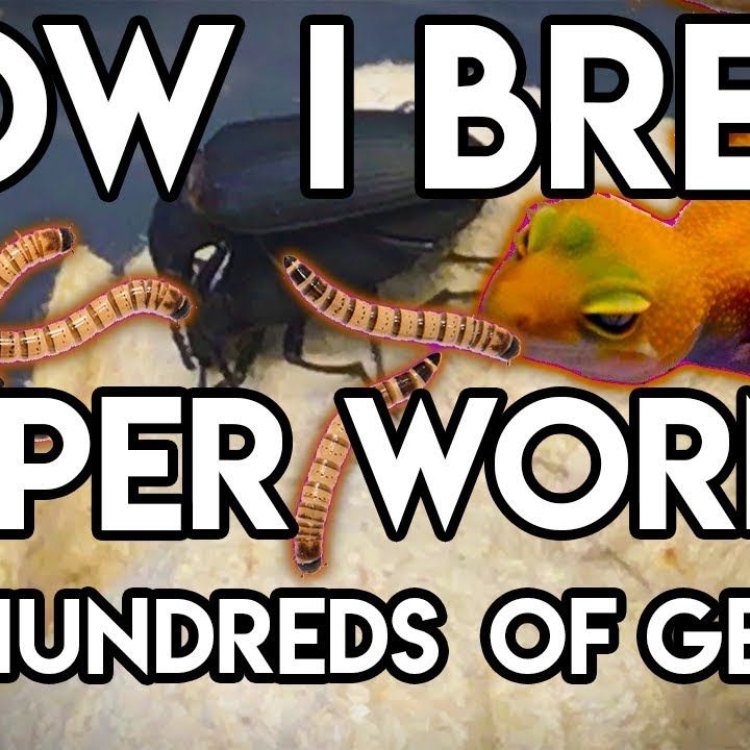
Meet the Mighty Superworm: Nature's Detritivore
Disclaimer: The content provided is for informational purposes only. We cannot guarantee the accuracy of the information on this page 100%. All information provided here may change without prior notice.


